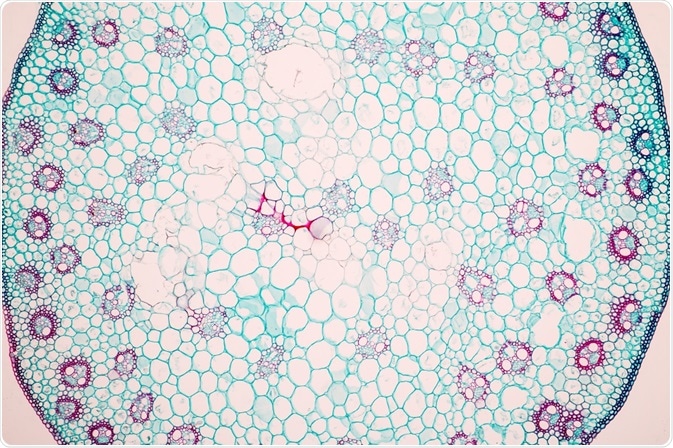Organoid systems are a modern scientific development that utilize three-dimensional cell cultures to model important features of whole organs.
 Credit: Rattiya Thongdumhyu/Shutterstock.com
Credit: Rattiya Thongdumhyu/Shutterstock.com
Stem cells are pluripotent, meaning they have the ability to differentiate into all cell types. For this reason, stem cell technologies have been employed as a foundation for organoid systems. The self-assembled cellular organization of the organoid results from the process of cell sorting out and the spatially restricted lineage commitment of precursor cells.
The organoid formed is capable of self-renewal as well as self-organization. Organoid systems are being employed in the modeling of human development and disease, with recent bioengineering developments increasing the level of experimental control.
Organoids also have potential applications in personalized medicine, with the cultures produced having genetic similarity to the patient.
Modeling development and disease through organoids
Human development and disease can be modeled through organoids because they are grown from human stem cells or induced pluripotent stem cells generated from adult cells. They are also similar to primary tissue in terms of composition and structure, and are easily manipulated and cryopreserved.
This means that organoids can produce near-physiological modeling systems for studying human tissues derived from stem cells. The method is particularly suitable for the analysis of human diseases that are difficult to simulate through animal models.
Organoids require only a small amount of starting material to generate a broad spectrum of tissue types. Experiment design is also made easier because tissue specific lineages can be cultured with high purity, therefore controlling for other cell types.
Stem cell organoid engineering
A wide variety of organoids have been produced but most are limited to representing single or partial tissue components. Advances in stem cell bioengineering techniques are improving the ability to control cell type, organization and interactions.
Enhanced organoid engineering requires the manipulation of each structural layer by the direct modification of stem cells or control of the microenvironment. Current technological developments in the field of nanotechnology and the production of new biomaterials are making this endeavor a reality.
For example, more accurate synthetic environments have been developed that closely replicate the natural extracellular matrix scaffolding structure through additional signaling proteins. By decorating the biologically inert areas of the matrix with signaling proteins, there is greater control of stem cell activity.
Advanced bioengineering of organoids will be particularly useful for developmental studies where the in vivo environment requires exact modeling through the detailing of complex components and interactions.
Organoids: Cancer in 3D - Sanger Institute
Organoids in personalized medicine
Organoids have great therapeutic potential, as a single patient biopsy can form an organoid model with genetic similarity. This means that tests of drug efficacy can be personalized with the results from the organoid system being derived from the stem cells of the patient.
The fast production of cultured organoids means that patients can be given the most suitable treatment that is specific to them without lengthy trial and error through drug prescription.
An example of this application is found in the current treatment of cystic fibrosis. The utilization of the modulating cystic fibrosis transmembrane conductance regulator (CFTR) function has been found to show variable treatment response.
The difference in patient outcomes during trials of CFTR modulators were suggested to be a result of individual factors affecting drug efficacy. A 2016, a study employed intestinal organoids derived from primary stem cell cultures to measure individual response to CFTR modulators.
The results indicated that testing through the organoid system reflected in vivo drug responses. Therefore, a faster determination of the best treatment for cystic fibrosis may soon be performed using organoids.
Sources:
- Simian, M. & Bissell, M.J. 2016. Organoids: A historical perspective of thinking in three dimensions, Journal of Cell Biology, 1, e201610056.
- Lancaster, M. & Knoblich, J.A. 2014. Organogenesis in a dish: Modeling development and disease using organoid technologies. Science, 345, pp. 1247125.
- Fatehullah, A. et al. 2016. Organoids as an in vitro model of human development and disease, Nature Cell Biology, 18, pp. 246-254.
- Yin, X. et al. 2016. Stem Cell Organoid Engineering, Cell Stem Cell, 18, pp. 25-38.
- Noordhoeck, J. et al. 2016. Intestinal organoids and personalized medicine in cystic fibrosis: a successful patient-oriented research collaboration, Current Opinion in Pulmonary Medicine, 22, pp. 610-616.
Further Reading
Last Updated: Jul 19, 2023